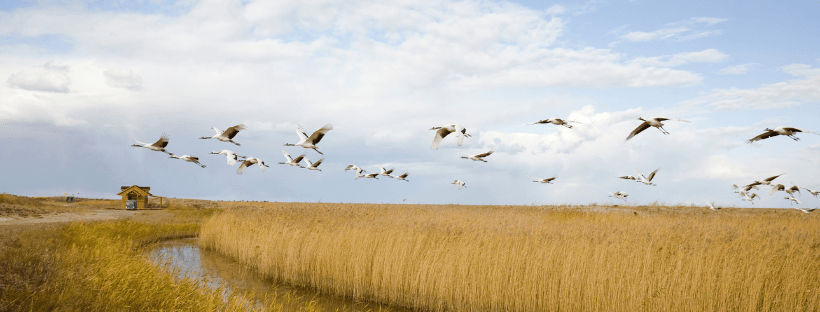(866) 247-3743
(866) 247-3743

We are often asked why do birds migrate in the first place and what can we do to help them? Migration is a great time for many bird watchers as there is a major change up from our daily backyard bird watching, and we get to see new birds coming through that we normally don’t see any other time of year.
How Birds Migrate
Going over incredible distances can be taxing on any species of animal. Birds though have a streamlined body shape and a lightweight skeleton composed of hollow bones minimize air resistance and reduce the amount of energy necessary to become and remain airborne. Well-developed pectoral muscles, which are attached to a uniquely avian structure called the furculum, power the flapping motion of the wings. The long feathers of the wings act as airfoils which help generate the lift necessary for flight.
Birds have a large, four-chambered heart which proportionately weighs 6 times more than a human heart. This, combined with a rapid heartbeat (the resting heart rate of a small songbird is about 500 beats per minute; that of a hummingbird is about 1,000 beats per minute) satisfies the rigorous metabolic demands of flight. Unlike mammalian or reptilian lungs, the lungs of birds remain inflated at all times, with the air sacs acting as bellows to provide the lungs with a constant supply of fresh air.
Birds are truly designed for long distance travel! If only our airlines were this efficient!
How high do birds fly?
Most songbirds migrate at 500 to 2,000 meters, but some fly as high as 6,800 meters; swans have been recorded at 8,000 meters and Bar-headed Geese at 9,000 meters (9,000 meters is almost 30,000 feet!!!)
Flight = Mobility
Flight affords mobility and has made possible the evolution of avian migration as a means of access to distant food resources. It also means avoiding the physiological stress associated with cold weather. Variations in the patterns of migration are numerous. Some species move only a few kilometers up and down mountain slopes. Others will travel hundreds or even thousands of kilometers, some over vast bodies of water or tracts of inhospitable terrain. The Arctic Tern makes an annual round-trip of about 30,000 kilometers (18,000 miles) from the Arctic breeding grounds to Antarctic seas. According to the Smithsonian Migratory Bird Center, a Blackpoll Warbler could boast of getting 720,000 miles to the gallon if it were burning gasoline instead of reserves of body fat. We need cars like that! The tiny Ruby-throated Hummingbird, weighing only about as much as a penny, makes the 1,000 km, 24-hour spring flight across the Gulf of Mexico from the Yucatán Peninsula to the southern coast of the United States.
Importance of Stopover Sites
A migrating bird faced with the dilemma of a stopover site having disappeared may not have any viable options. Without places along the way that provide an adequate food supply for the quick replenishment of fat reserves, shelter from predators, and water, these birds are probably not going to make it.
Declines in the numbers of many Neotropical migratory bird species have been detected over the past several decades. There are two main causes: fragmentation of breeding habitat and destruction of tropical forests on the wintering grounds.
As the birds move north in waves, they fan out across the eastern U.S., feeding on the all-you-can-eat buffet of insects that hatch out in the spring. This broad-front movement pattern means that songbird stopover sites are widely dispersed across the wooded areas of the eastern U.S. in the spring.
For those birds heading south in the fall across the Gulf of Mexico, the Gulf coast is an important area for stopovers.
In the fall, higher elevation sites–especially mountain meadows–become important because of the abundant populations of insects that peak late in the season. Also in the fall, at lower elevations, foothill riparian areas (rivers, streams and creeks) provide important fruit bearing plants for birds such as tanagers and grosbeaks.
Loss and degradation of stopover habitat not only can result in more birds dying while on migration, but it can also have serious repercussions in terms of nesting success. For example, birds heading north are already constrained by the relatively short amount of time available to get to the breeding grounds, establish a territory, pair with a mate, and get on with the further demands of raising young. Late arrival, or arrival in poor condition, on the breeding grounds because of inadequate food and rest en route, is likely to jeopardize a bird’s ability to reproduce.
Here are some great points to help birds
Being aware of and assisting our friends during their long travels is a sure fire way of getting them back every year. Let’s all do what we can to lend a helping hand.